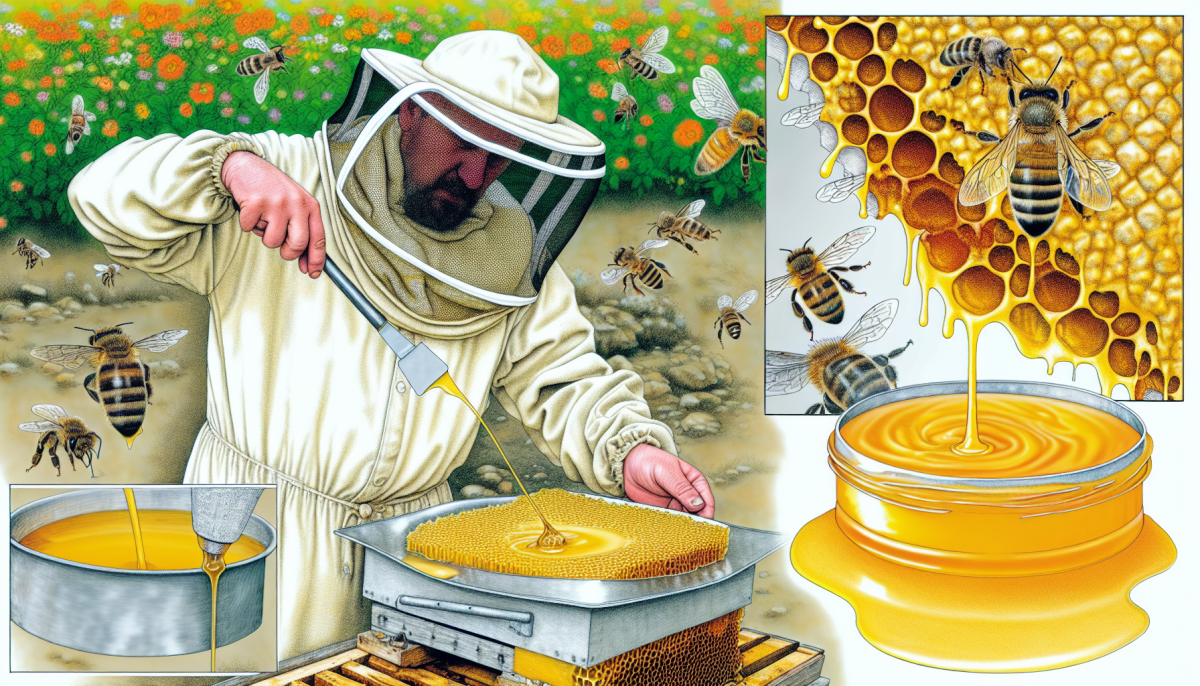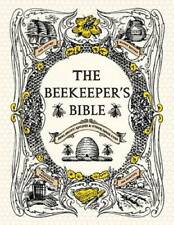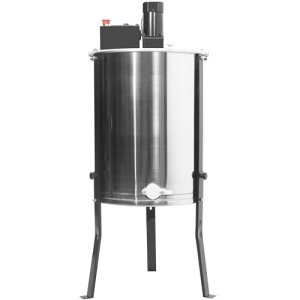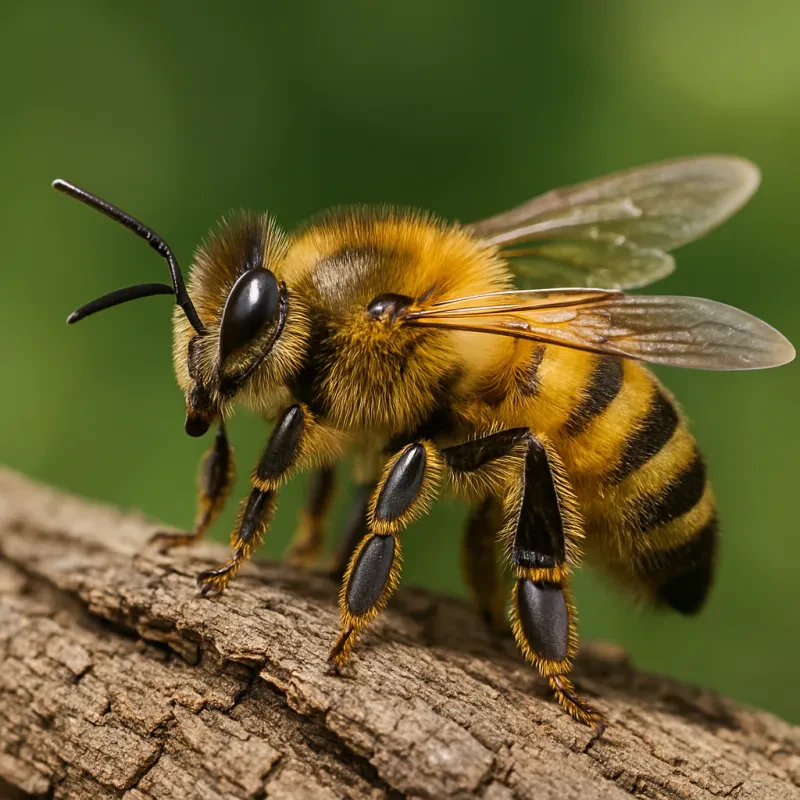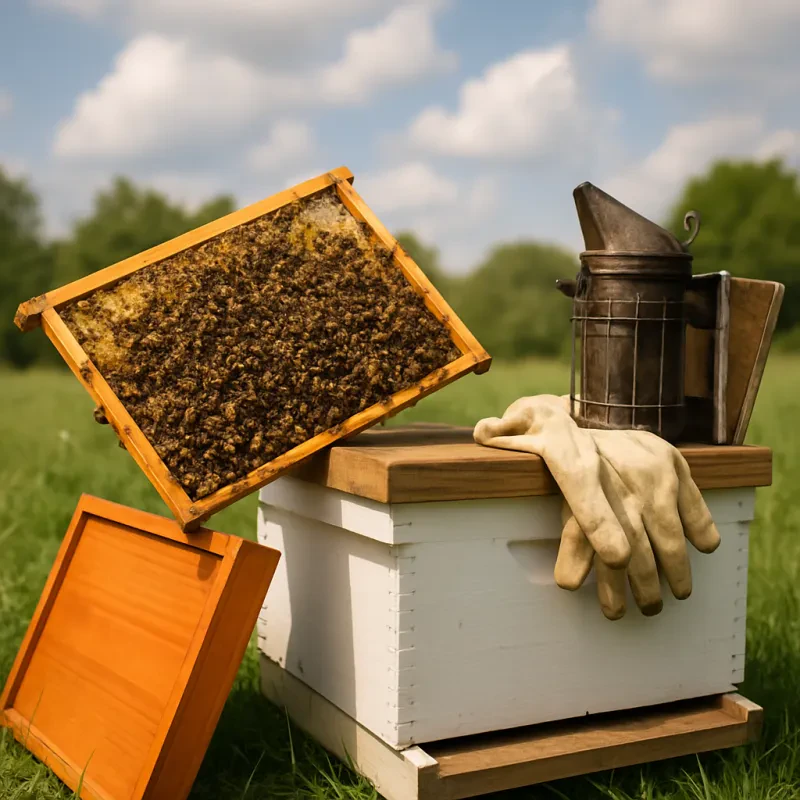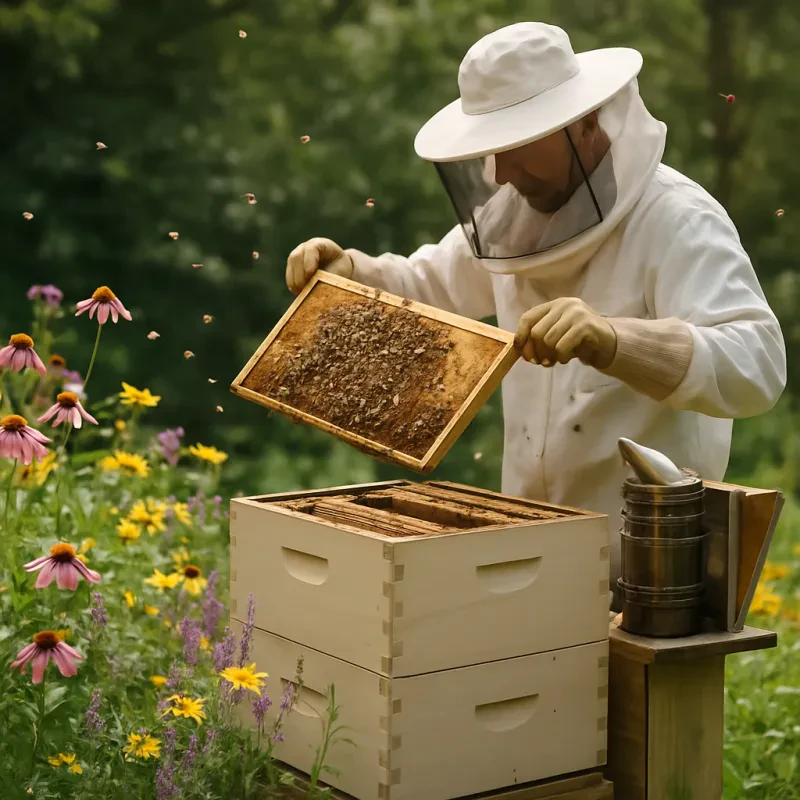$18.79
4.29 out of 5 starsBeekeeper's Bible: Bees, Honey, Recipes & Home Applications
The ultimate guide to bees and honey - a comprehensive resource for beekeepers and enthusiasts alike
Product information
Product Review Score
Product links
Separating honey from wax is a crucial step in the process of harvesting honey, ensuring that beekeepers and hobbyists alike can enjoy the pure, sweet product of their hives. This article explores the most efficient methods to extract honey from the comb while preserving the quality of the honey and the comb for future use.
Understanding the Basics
Before diving into the separation process, it's important to understand that honey is stored by bees in the hexagonal cells of the comb, which is made from beeswax. When bees fill these cells with honey, they cap them with a thin layer of wax. The challenge for beekeepers is to remove this wax cap and extract the honey without damaging the comb, especially if they plan to use the method of returning the combs to the hives for bees to refill, a practice known as honeycomb recycling.
The Harvesting Time
Timing is crucial in the process of harvesting honey. Beekeepers typically wait until late summer or early fall to harvest, ensuring that the majority of the honey is mature and the cells have been capped by the bees. Harvesting too early can lead to honey with high moisture content, which is prone to fermentation.
Equipment Needed
To efficiently separate honey from wax, you will need:
- A bee suit and gloves for protection
- A smoker to calm the bees
- A hive tool to open the hive and remove frames
- An uncapping knife or fork to remove the wax caps
- A honey extractor, either manual or electric
- Strainers or filters
- Containers for collecting honey
Step 1: Removing the Frames
The first step involves opening the hive and carefully removing the frames filled with capped honey. It's essential to use the smoker judiciously to calm the bees and minimize disturbance. Once the frames are removed, they should be transported to a clean, bee-free area for extraction.
Step 2: Uncapping the Honey
Once you have the frames in your extraction area, the next step is to uncap the honey. This involves removing the thin wax caps the bees have made to seal the honey in each cell. An uncapping knife, which can be heated to make slicing through the wax easier, or an uncapping fork, can be used for this purpose. The goal is to remove the caps without damaging the comb structure beneath.
Step 3: Extracting the Honey
After uncapping, the frames are placed in a honey extractor. Extractors come in various sizes and operate either manually or electrically. The principle, however, remains the same: the extractor spins the frames, using centrifugal force to pull the honey out of the cells and onto the sides of the extractor, from where it drips down to the bottom of the barrel.
Step 4: Filtering the Honey
Once extracted, the honey contains bits of wax and possibly other small debris. To purify it, the honey should be filtered. This can be done using a fine mesh or a specialized honey filter. The key is to remove impurities without filtering out the natural pollen and enzymes that give honey its health benefits and unique flavors.
Step 5: Bottling the Honey
The final step is bottling the honey for storage or sale. Honey should be stored in clean, airtight containers. Glass jars are preferred by many beekeepers for their non-reactive nature and ability to preserve the honey's flavor.
Wax Processing
The wax caps removed during uncapping and any residual wax from the extraction process can be collected and processed separately. This beeswax is valuable and can be melted down, clarified, and used in a variety of products such as candles, cosmetics, and food wraps.
Tips for Efficiency and Safety on Removing Honey from Wax
Maintain Clean Equipment: Ensure all your equipment is clean and ready to use before starting. This prevents contamination and ensures the purity of the honey.
Be Gentle with the Bees: Use smoke wisely to calm the bees and minimize harm. Keeping the bees calm and healthy is crucial for the beekeeping ecosystem's sustainability.
Temperature Matters: Warm honey flows more easily. If your extraction room is too cold, consider gently warming the honey frames before extraction to make the process smoother.
Patience Pays Off: Allow the honey to settle for a few days after extraction and filtering to let air bubbles rise and debris settle. You can then skim off any foam and debris from the top and bottle the clear honey beneath.
Wax Removal from the Honeycomb
Separating honey from wax is a rewarding process that epitomizes the beekeeper's craft. By following these steps and maintaining a focus on quality and care, beekeepers can ensure they produce pure, delicious honey while preserving the health of their hives. The efficiency of the process not only maximizes the yield of honey but also ensures the sustainability of beekeeping practices, contributing to the wellbeing of the bee population and the environment.
$449.99
4.68 out of 5 stars8 Frame Electric Honey Extractor - Stainless Steel
Effortlessly Extract Honey with our 8-Frame Electric Extractor, Made of Durable Stainless Steel
Product information
Product Review Score
Product links
